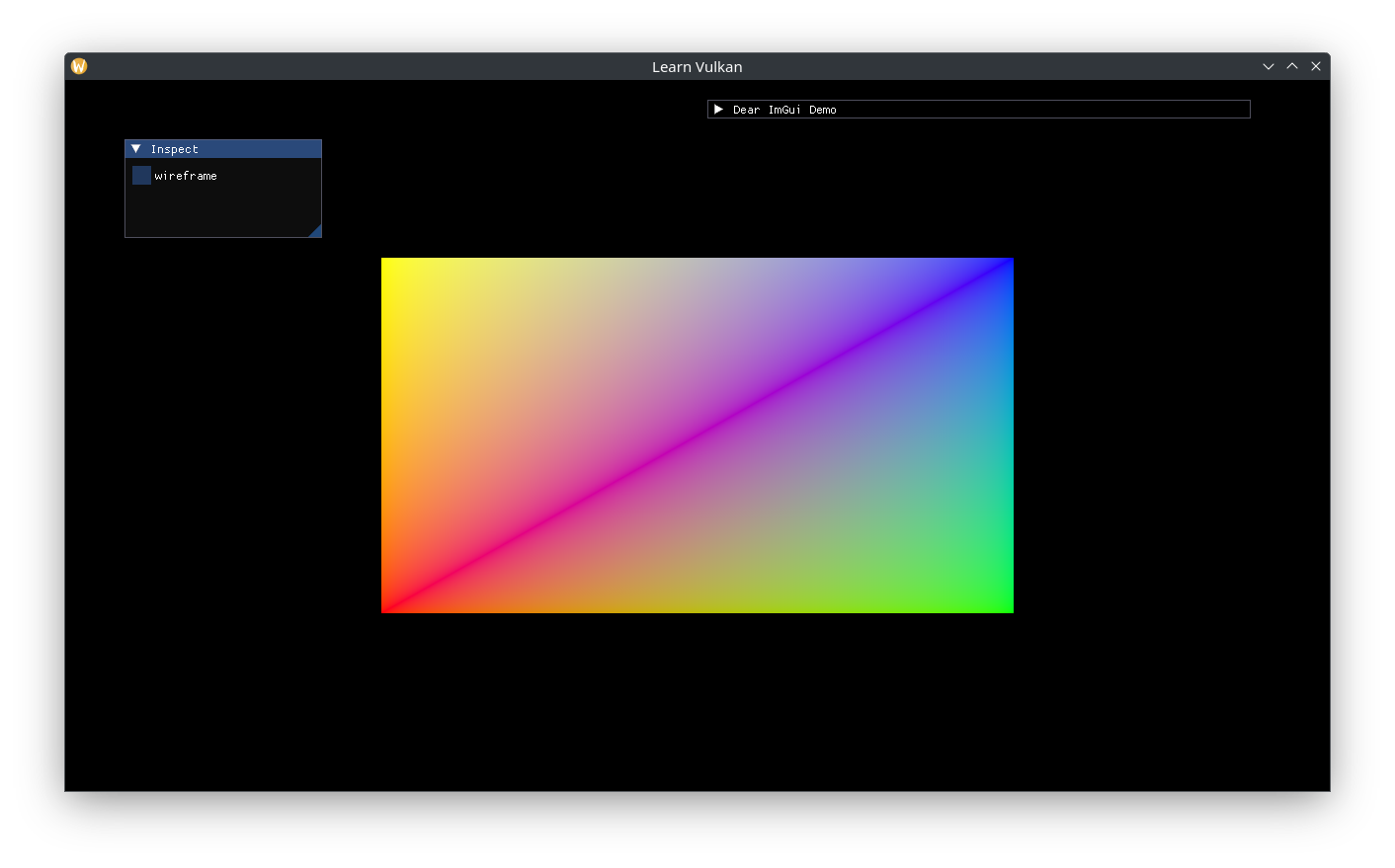Device Buffers
This guide will only use device buffers for vertex buffers, where both vertex and index data will be strung together in a single VBO. The create function can thus take the data and perform the buffer copy operation before returning. In essence this return value is a "GPU const" buffer. To enable utilizing separate spans for vertices and indices (instead of forcing allocation of a contiguous bytestream and copying the data), the create function takes a slightly awkward span of spans:
// disparate byte spans.
using ByteSpans = std::span<std::span<std::byte const> const>;
// returns a Device Buffer with each byte span sequentially written.
[[nodiscard]] auto create_device_buffer(BufferCreateInfo const& create_info,
CommandBlock command_block,
ByteSpans const& byte_spans) -> Buffer;
Implement create_device_buffer():
auto vma::create_device_buffer(BufferCreateInfo const& create_info,
CommandBlock command_block,
ByteSpans const& byte_spans) -> Buffer {
auto const total_size = std::accumulate(
byte_spans.begin(), byte_spans.end(), 0uz,
[](std::size_t const n, std::span<std::byte const> bytes) {
return n + bytes.size();
});
auto staging_ci = create_info;
staging_ci.usage = vk::BufferUsageFlagBits::eTransferSrc;
// create staging Host Buffer with TransferSrc usage.
auto staging_buffer =
create_buffer(staging_ci, BufferMemoryType::Host, total_size);
// create the Device Buffer.
auto ret = create_buffer(create_info, BufferMemoryType::Device, total_size);
// can't do anything if either buffer creation failed.
if (!staging_buffer.get().buffer || !ret.get().buffer) { return {}; }
// copy byte spans into staging buffer.
auto dst = staging_buffer.get().mapped_span();
for (auto const bytes : byte_spans) {
std::memcpy(dst.data(), bytes.data(), bytes.size());
dst = dst.subspan(bytes.size());
}
// record buffer copy operation.
auto buffer_copy = vk::BufferCopy2{};
buffer_copy.setSize(total_size);
auto copy_buffer_info = vk::CopyBufferInfo2{};
copy_buffer_info.setSrcBuffer(staging_buffer.get().buffer)
.setDstBuffer(ret.get().buffer)
.setRegions(buffer_copy);
command_block.command_buffer().copyBuffer2(copy_buffer_info);
// submit and wait.
// waiting here is necessary to keep the staging buffer alive while the GPU
// accesses it through the recorded commands.
// this is also why the function takes ownership of the passed CommandBlock
// instead of just referencing it / taking a vk::CommandBuffer.
command_block.submit_and_wait();
return ret;
}
Add a command block pool to App, and a helper function to create command blocks:
void App::create_cmd_block_pool() {
auto command_pool_ci = vk::CommandPoolCreateInfo{};
command_pool_ci
.setQueueFamilyIndex(m_gpu.queue_family)
// this flag indicates that the allocated Command Buffers will be
// short-lived.
.setFlags(vk::CommandPoolCreateFlagBits::eTransient);
m_cmd_block_pool = m_device->createCommandPoolUnique(command_pool_ci);
}
auto App::create_command_block() const -> CommandBlock {
return CommandBlock{*m_device, m_queue, *m_cmd_block_pool};
}
Update create_vertex_buffer() to create a quad with indices:
template <typename T>
[[nodiscard]] constexpr auto to_byte_array(T const& t) {
return std::bit_cast<std::array<std::byte, sizeof(T)>>(t);
}
// ...
void App::create_vertex_buffer() {
// vertices of a quad.
static constexpr auto vertices_v = std::array{
Vertex{.position = {-0.5f, -0.5f}, .color = {1.0f, 0.0f, 0.0f}},
Vertex{.position = {0.5f, -0.5f}, .color = {0.0f, 1.0f, 0.0f}},
Vertex{.position = {0.5f, 0.5f}, .color = {0.0f, 0.0f, 1.0f}},
Vertex{.position = {-0.5f, 0.5f}, .color = {1.0f, 1.0f, 0.0f}},
};
static constexpr auto indices_v = std::array{
0u, 1u, 2u, 2u, 3u, 0u,
};
static constexpr auto vertices_bytes_v = to_byte_array(vertices_v);
static constexpr auto indices_bytes_v = to_byte_array(indices_v);
static constexpr auto total_bytes_v =
std::array<std::span<std::byte const>, 2>{
vertices_bytes_v,
indices_bytes_v,
};
// we want to write total_bytes_v to a Device VertexBuffer | IndexBuffer.
m_vbo = vma::create_device_buffer(m_allocator.get(),
vk::BufferUsageFlagBits::eVertexBuffer |
vk::BufferUsageFlagBits::eIndexBuffer,
create_command_block(), total_bytes_v);
}
Update draw():
void App::draw(vk::CommandBuffer const command_buffer) const {
m_shader->bind(command_buffer, m_framebuffer_size);
// single VBO at binding 0 at no offset.
command_buffer.bindVertexBuffers(0, m_vbo.get().buffer, vk::DeviceSize{});
// u32 indices after offset of 4 vertices.
command_buffer.bindIndexBuffer(m_vbo.get().buffer, 4 * sizeof(Vertex),
vk::IndexType::eUint32);
// m_vbo has 6 indices.
command_buffer.drawIndexed(6, 1, 0, 0, 0);
}
